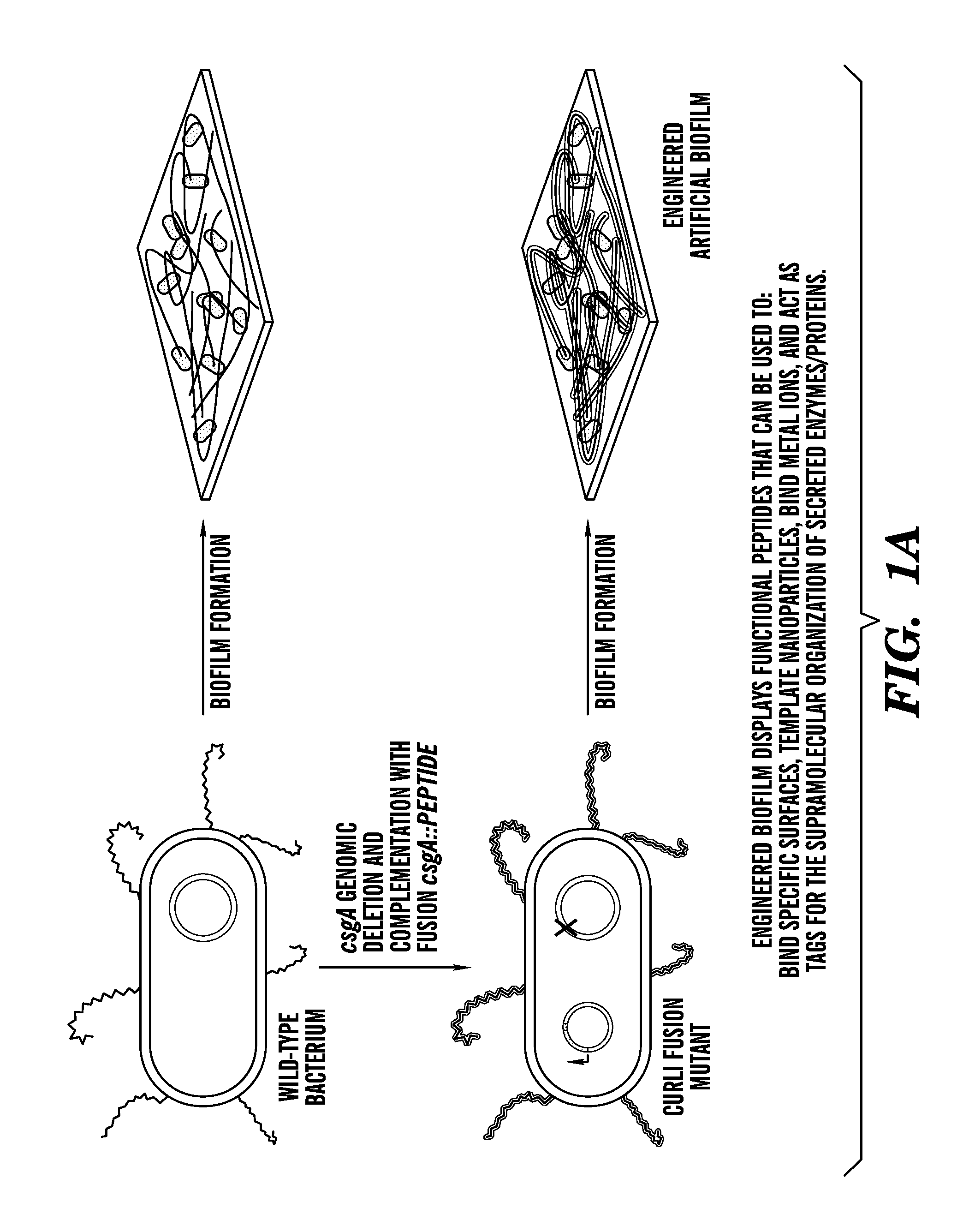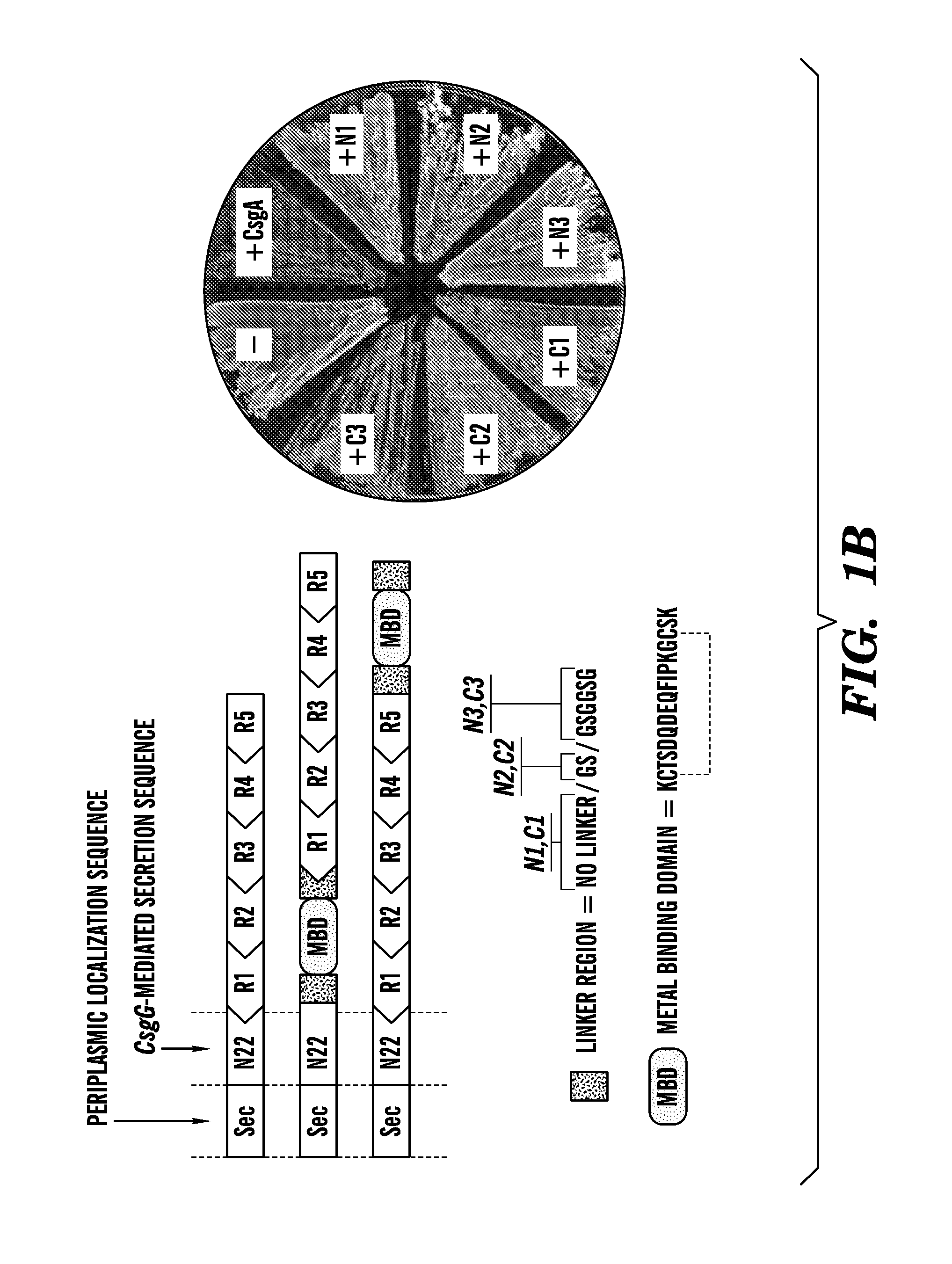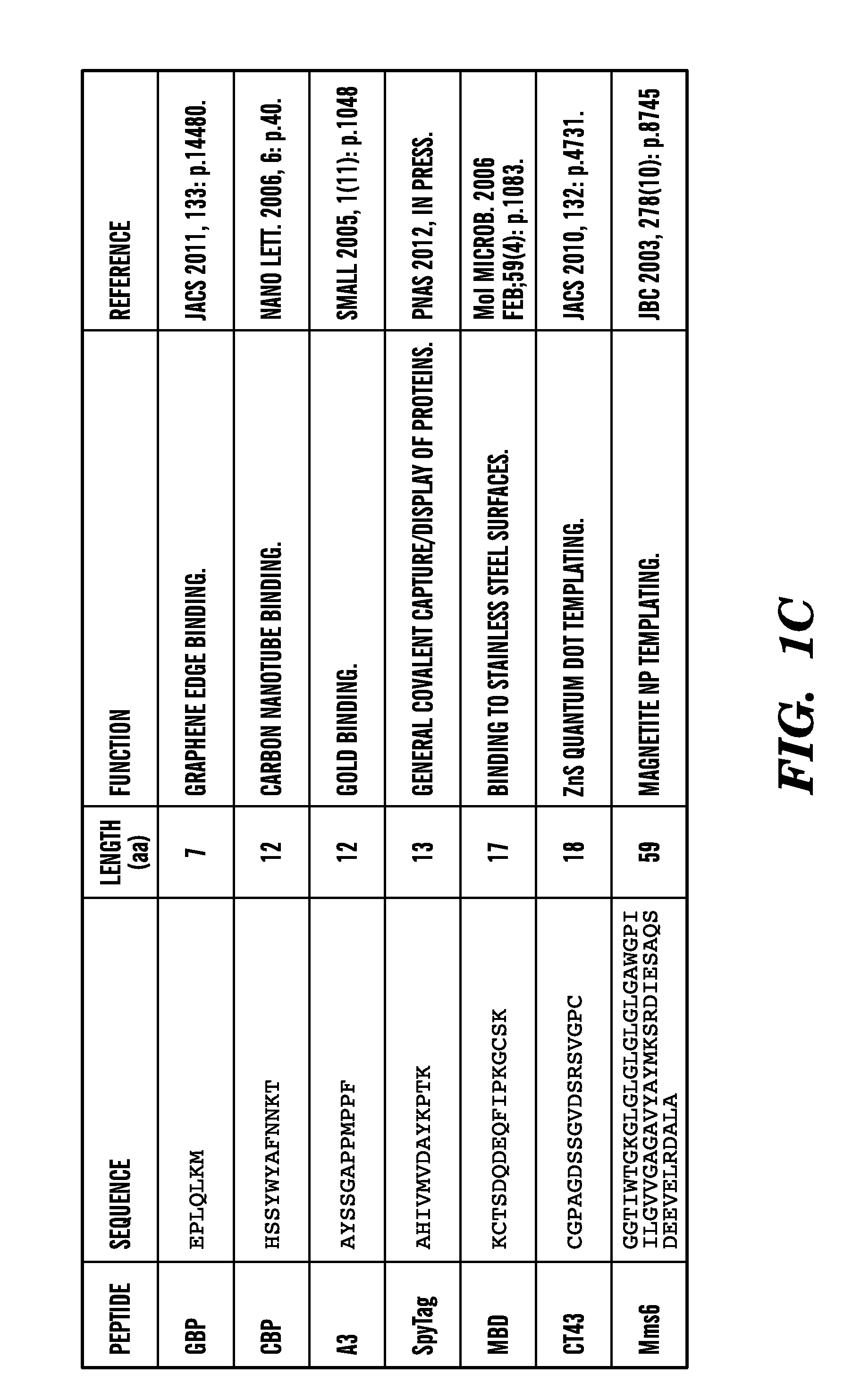Genetic Reprogramming of Bacterial Biofilms
- Summary
- Abstract
- Description
- Claims
- Application Information
AI Technical Summary
Benefits of technology
Problems solved by technology
Method used
Image
Examples
example 1
[0127]Described herein is a method to genetically modify the major proteinaceous component of bacterial biofilms to display functional peptides, thus reprogramming biofilms for a wide variety of beneficial applications including but not limited to industrial biocatalysis, bioremediation, bioenergy, materials templating, and biosensing. This technology is based on the curli system of E. coli, which consists of cell-surface anchored amyloid fibrils that are made from the self-assembly of a secreted protein (FIGS. 1A-1F). The technology described herein demonstrates that functional peptide domains can be appended to the secreted protein so that, once it is assembled, the amyloid fibril network exhibits augmented functionality (e.g., binding to various biological and chemical entities). Furthermore, this extracellular matrix-peptide display technology can be adapted for the immobilization of any protein.
[0128]Results
[0129]Fusion Domains can be Displayed on Curli Nanofibers.
[0130]Many mi...
example 2
[0193]Because of their role in bacterial pathogenicity and persistence, the vast majority of research on biofilms has focused on preventing their formation and promoting their dispersal. However, this has resulted in an overlooked opportunity to develop biofilms as functional materials. Demonstrated herein is a new technology platform, Biofilm-Integrated Nanofiber Display (BIND), in which the display of functional peptides is genetically engineered on the curli system of E. coli, the major proteinaceous component of the biofilm matrix consisting of thin amyloidogenic nanofibers. Bacteria in such a system are contemplated as serving as a living foundry for the production, assembly, and post-processing of customized advanced biomaterials and programmable surface coatings. Herein, a fusion site in the structural curli gene csgA is identified that allows for the display of peptides while retaining the ability of secreted CsgA chimeras to self-assemble into curli fiber networks. A librar...
example 3
Programmable Biofilm-Based Materials from Engineered Curli Nanofibers
[0278]Because of their role in bacterial pathogenicity and persistence, the vast majority of research on biofilms has focused on preventing their formation and promoting their dispersal. However, this has resulted in an overlooked opportunity to develop biofilms as functional materials. Demonstrated herein is a new technology platform, Biofilm-Integrated Nanofiber Display (BIND), in which the display of functional peptides is genetically engineered on the curli system of E. coli, the major proteinaceous component of the biofilm matrix consisting of thin amyloidogenic nanofibers. It is contemplated herein that bacteria in such a system can serve as a living foundry for the production, assembly, and post-processing of customized advanced biomaterials and programmable surface coatings. Identified herein is a fusion site in the structural curli gene csgA that allows for the display of peptides while retaining the abili...
PUM
| Property | Measurement | Unit |
|---|---|---|
| Flexibility | aaaaa | aaaaa |
Abstract
Description
Claims
Application Information
 Login to View More
Login to View More - R&D
- Intellectual Property
- Life Sciences
- Materials
- Tech Scout
- Unparalleled Data Quality
- Higher Quality Content
- 60% Fewer Hallucinations
Browse by: Latest US Patents, China's latest patents, Technical Efficacy Thesaurus, Application Domain, Technology Topic, Popular Technical Reports.
© 2025 PatSnap. All rights reserved.Legal|Privacy policy|Modern Slavery Act Transparency Statement|Sitemap|About US| Contact US: help@patsnap.com



